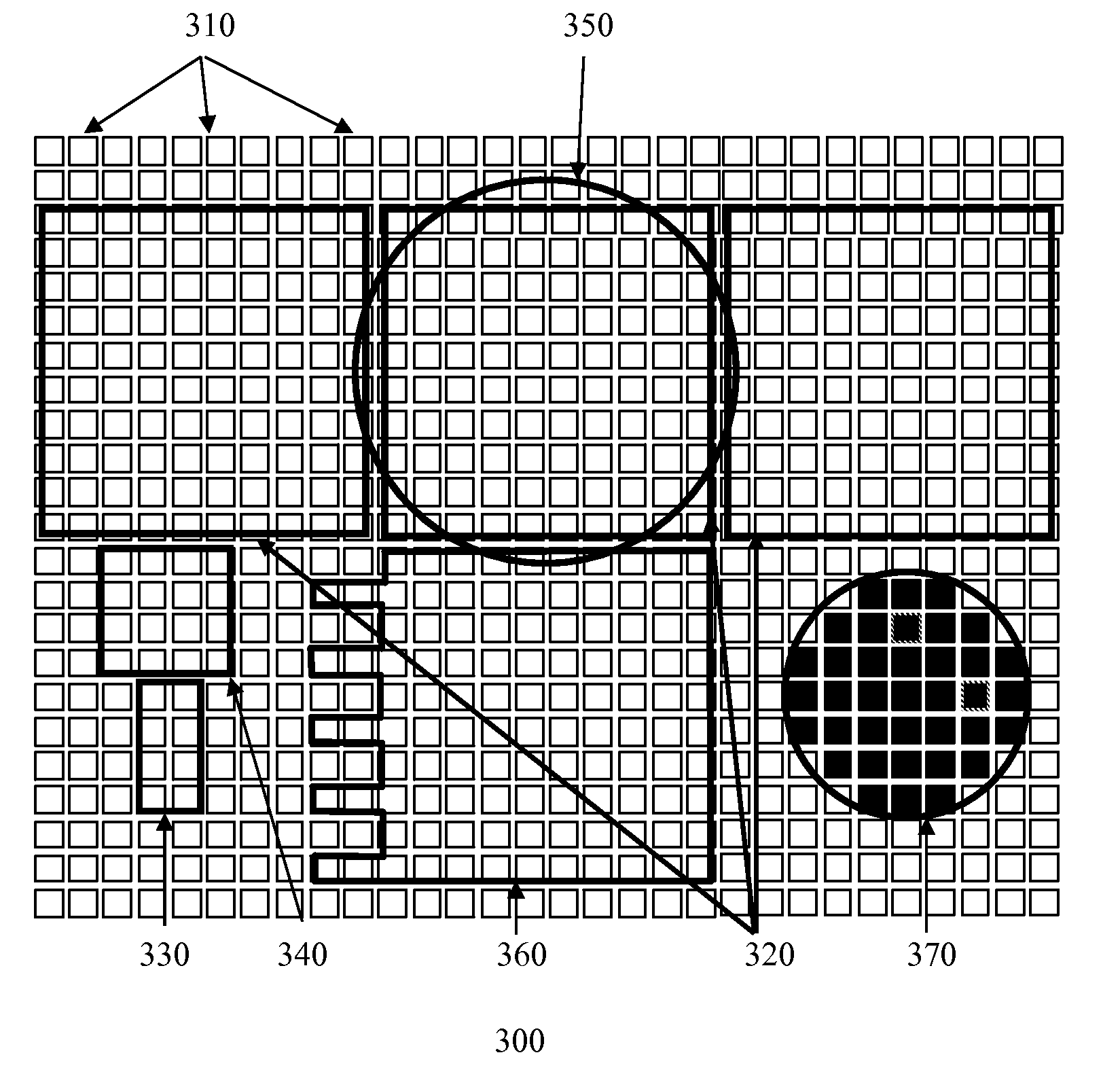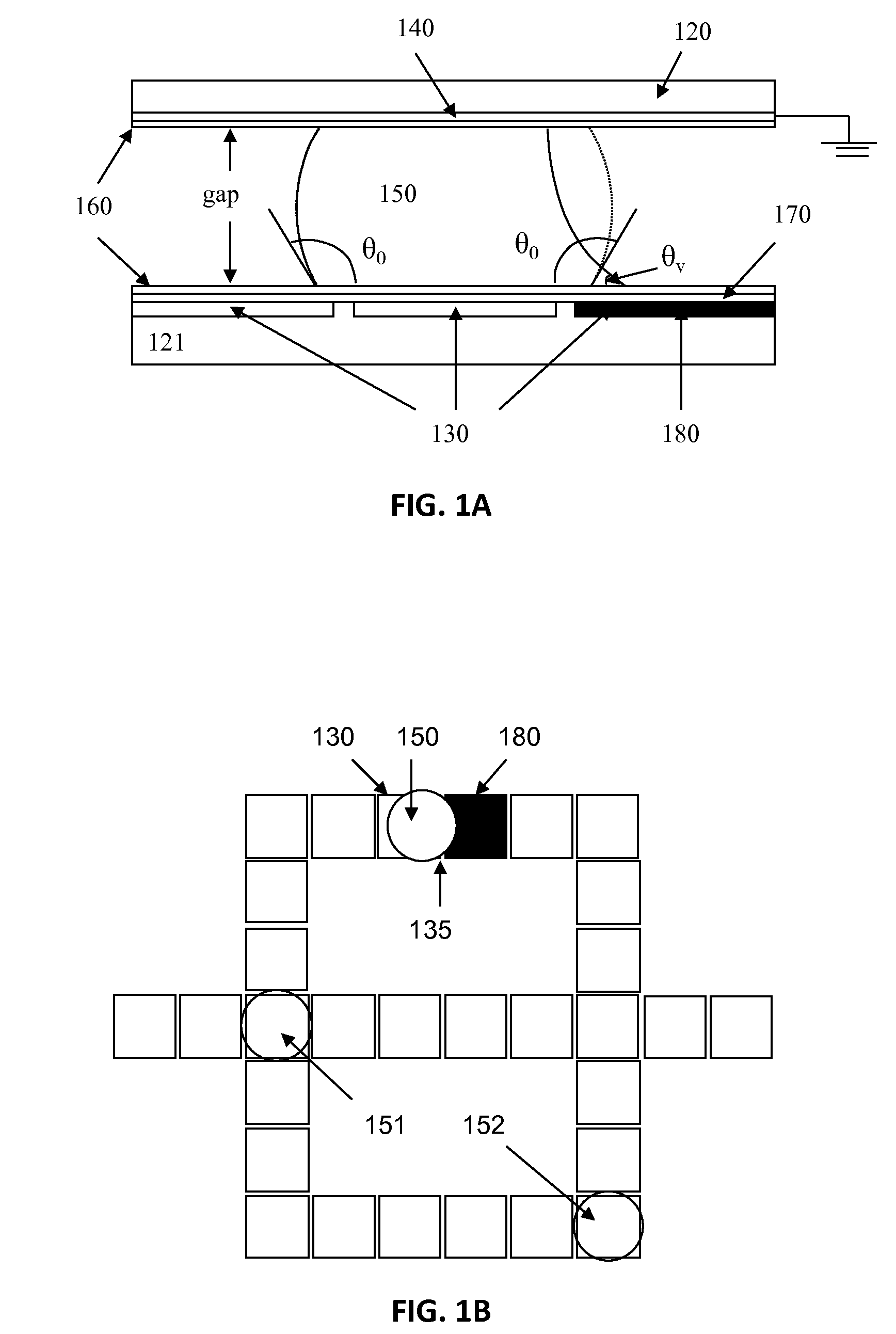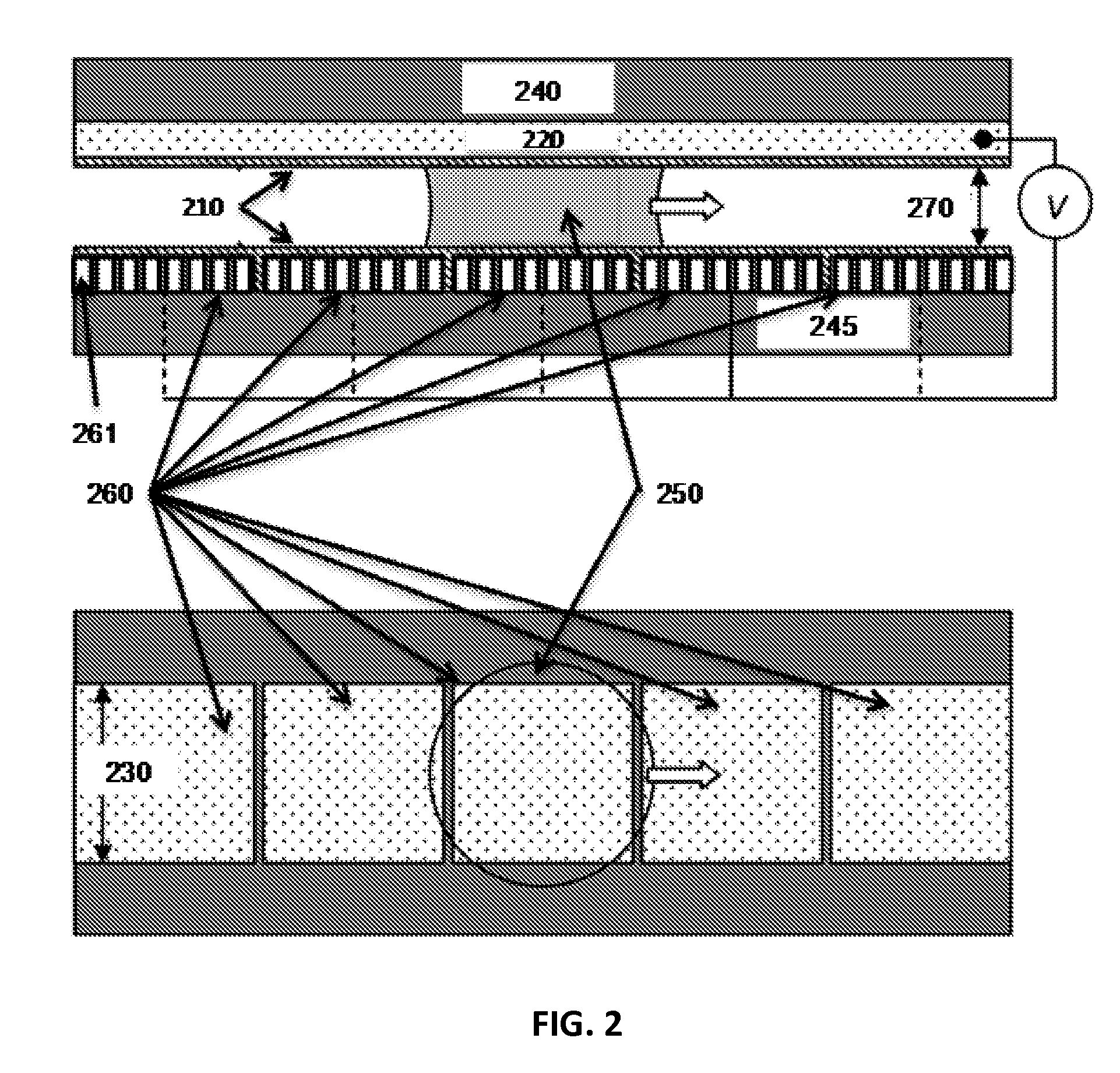Microelectrode array architecture
a technology of array architecture and microelectrode, which is applied in the field of microelectrode array architecture, can solve the problems of high cost of semiconductor manufacturing techniques, difficult access to semiconductor foundries, so as to reduce labor and cost, reduce energy consumption, and relieve loc designers
- Summary
- Abstract
- Description
- Claims
- Application Information
AI Technical Summary
Benefits of technology
Problems solved by technology
Method used
Image
Examples
Embodiment Construction
[0096]Microelectrode Array Architecture can be applied to other digital microfluidic technologies such as dielectrophoresis (DEP) based technologies but for the discussions below, EWOD technology will be used to illustrate various embodiments of the present invention.
[0097]EWOD based devices are commonly used to manipulate droplets by using the interfacial tension gradient across the gap between the adjacent electrodes to actuate the droplets. The designs of electrodes include the desired shapes, sizes of each of the electrode and the gaps between each of the two electrodes. In the droplet manipulation of EWOD based LOC layout design, the droplet pathways generally are composed of a plurality of electrodes that connect different areas of the design.
[0098]A conventional electrowetting microactuator mechanism (in small scale for illustration purposes only) is illustrated in FIG. 1A. EWOD-based digital microfluidic device consists of two parallel glass plates 120 and 121, respectively....
PUM
| Property | Measurement | Unit |
|---|---|---|
| driving voltage | aaaaa | aaaaa |
| velocity | aaaaa | aaaaa |
| height | aaaaa | aaaaa |
Abstract
Description
Claims
Application Information
 Login to View More
Login to View More - R&D
- Intellectual Property
- Life Sciences
- Materials
- Tech Scout
- Unparalleled Data Quality
- Higher Quality Content
- 60% Fewer Hallucinations
Browse by: Latest US Patents, China's latest patents, Technical Efficacy Thesaurus, Application Domain, Technology Topic, Popular Technical Reports.
© 2025 PatSnap. All rights reserved.Legal|Privacy policy|Modern Slavery Act Transparency Statement|Sitemap|About US| Contact US: help@patsnap.com



